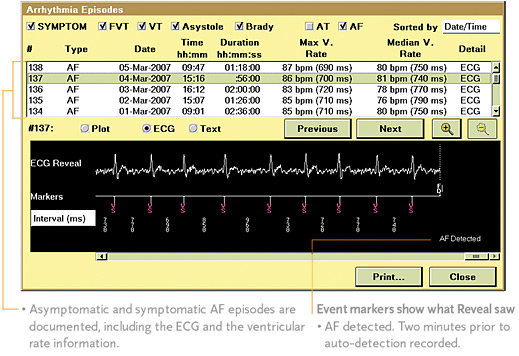
 |
 |
| ||||||||||||||||||||||||||||||||||||||||
|
Edgar: patient case Long-term monitoring, real-time data
| ||||||||||||||||||||||||||||||||||||||||
| Echocardiography was normal | |
| Rate control was unsuccessful: | |
| Verapamil -> | patient remained symptomatic |
| Metoprolol -> | reduction of exercise capacity |
| Switch to rhythm control: | |
| Sotalol and propafenone -> | adverse effects |
| Anticoagulation prescribed | |
| 4 cardioversion attempts -> | unsuccessful, recurrent symptomatic events |
Is AF truly absent?
Can I confidently discontinue anticoagulation?
Are patient symptoms related to arrhythmias?
Which rate or rhythm control should I prescribe?
Reveal XT was chosen to monitor for AF episodes. The patient underwent Pulmonary Vein Isolation.
In the first two months after ablation both symptomatic and asymptomatic AF episodes were recorded. Thereafter AF burden gradually decreased and stopped within five months after ablation. But in the following three months AF episodes began to recur. These asymptomatic events were automatically recorded by Reveal, giving the facts on this patient’s AF burden. This can help the physician determine his anticoagulation strategy.
